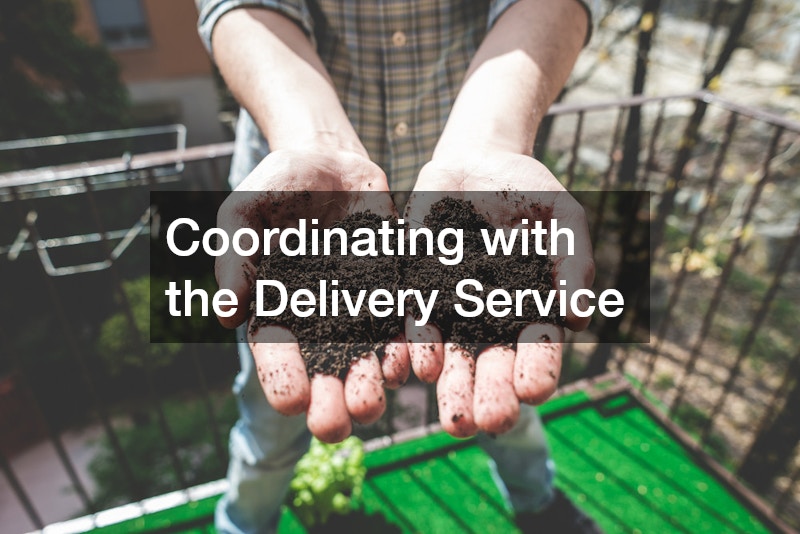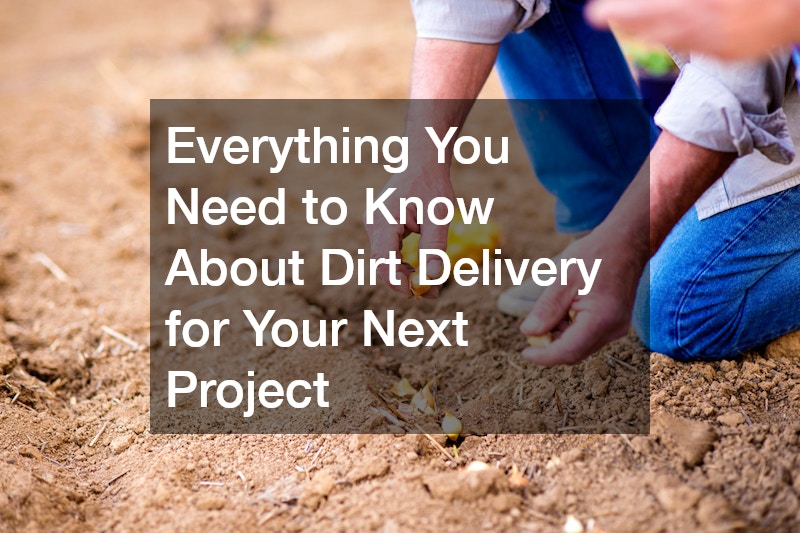Understanding dirt delivery is crucial for any construction or landscaping project. This article aims to provide comprehensive insights into the logistics, costs, and types of dirt that can be delivered to facilitate your next project. When armed with the right information, managing a dirt delivery becomes a straightforward task that contributes positively to the overall success of the project.
Choosing the Right Type of Dirt for Your Project
Understanding Different Types of Dirt
Dirt comes in various forms, like topsoil, fill dirt, and garden soil. Each type of dirt has its specific use and application, with some designed for particular functions such as growing plants or providing foundational support.
Topsoil, for instance, is rich in organic material and nutrients, making it ideal for gardens, while fill dirt is often used to fill in depressions or contour land.
Choosing the right type for your project involves understanding the specific characteristics that each type of dirt offers. Garden soil, for example, is a blend often supplemented with nutrients to support plant growth, making it different from basic topsoil. By identifying the distinct qualities in each dirt type, you can make informed decisions that align with your project’s goals.
Assessing Project Requirements
Assessing project requirements is integral in choosing the right dirt, as needs can vary greatly between different undertakings. First, define the purpose of the dirt within your project framework; whether it’s for planting, grading, or structural support, the goal determines the choice. If the project involves gardening, prioritize topsoil, as its organic richness boosts plant health.
Second, consider the existing conditions of the project site, including soil quality and environmental factors that might affect soil performance. By taking these factors into account, you gain insights into potential amendments that the soil might need, like pH adjustment or nutrient supplementation. This proactive approach ensures that when the dirt arrives, it’s ready for immediate and effective use.
Finally, do not underestimate the value of consulting with professionals who can provide tailored advice based on their expertise. Engaging with local nurseries or soil scientists can offer perspectives that align closely with your regional climate and soil characteristics. This collaborative approach results in a choice that not only meets but exceeds project demands.
Factors That Affect the Cost of Dirt Delivery
Quantity and Distance
The volume of dirt needed and the distance between the supplier and your site play a significant role in costs. Larger quantities of dirt naturally incur higher transportation and labor costs, especially if it exceeds certain logistical capacities. Additionally, the distance the dirt must travel directly impacts fuel expenses and time, which in turn affects the overall pricing.
It’s advisable to order slightly more than your calculated requirement to account for any project scope changes or unexpected material loss. Dealers often provide bulk discounts, making it economically beneficial when working on expansive projects. Being mindful of logistical considerations and thoroughly planning delivery schedules can mitigate excessive charges.
Type of Dirt
The cost varies depending on whether you need basic fill dirt or specialized soils like nutrient-rich topsoil. While fill dirt is generally more affordable, being used primarily for foundational support and not requiring enrichment, the demand for topsoil’s quality attributes warrants higher pricing. Projects that prioritize environmental sustainability or organic farming may require premium garden soil mixes, further escalating costs.
For specialty soils that serve very particular needs, such as soils enhanced with specific minerals, the investment might prove substantial but necessary. In the long term, using the right soil type optimizes growth potential and minimizes waste, offering financial returns through decreased maintenance expenses. The key lies in balancing initial expenditure against potential value-added to the final outcome.
Preparing Your Site for Dirt Delivery
Site Assessment and Preparation
Site assessment and preparation are crucial steps that prepare the groundwork to receive dirt delivery effectively. Begin by surveying the area to identify potential obstacles to delivery and distribution, such as narrow access routes or overhead power lines. Clearing the entire site and ensuring ample space for unloading avoids potential hazards and disruptions during the dirt delivery process.
Mapping out a storage plan for delivered dirt aids in managing space efficiently, saving time during the distribution phase. Factors such as weather conditions and site slope need consideration to prevent soil erosion and runoff post-delivery. Adequate site preparation not only speeds up the delivery process but also safeguards the quality and integrity of the soil.
Coordinating with the Delivery Service
Effective communication with the delivery service is vital to ensure the dirt delivery process is smooth and timely. Coordinating schedules in advance, ideally during early project planning, avoids scheduling conflicts and delays that can disrupt project timelines. Establishing clear lines of communication can help address unforeseen issues rapidly, thereby averting potential complications.
Discuss with your service provider about preferred drop-off points, type of truck used, and any special requirements specific to your site. Information about access constraints or local regulations can be shared to guarantee compliance and prevent penalties. This strategic coordination ensures that drivers are well-informed, facilitating a seamless delivery experience.
By following these guidelines, you can efficiently manage dirt delivery to support the success of your project, from understanding types and costs to effective site preparation. This comprehensive approach ensures that the choice of dirt and delivery logistics aligns closely with your project objectives, paving the way for optimal results. Ensure you’re informed and prepared to meet your project’s demands, embracing the nuances of dirt delivery as an integral part of your project strategy.



